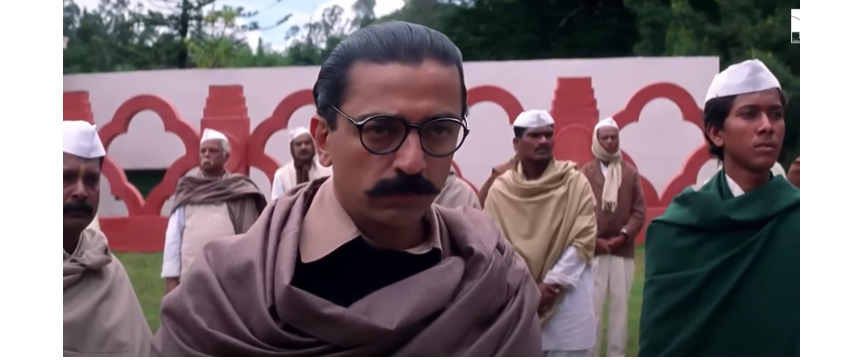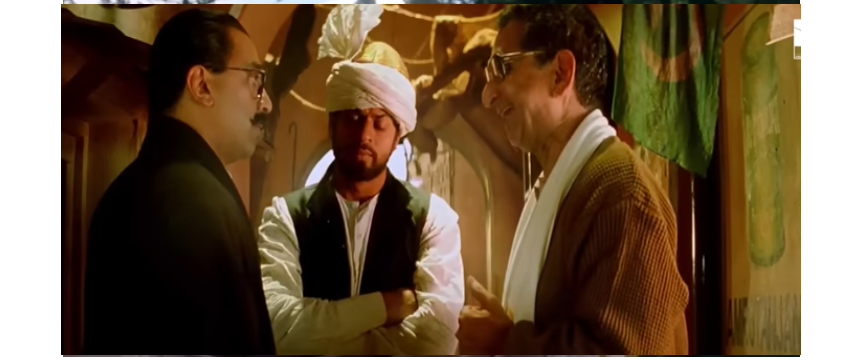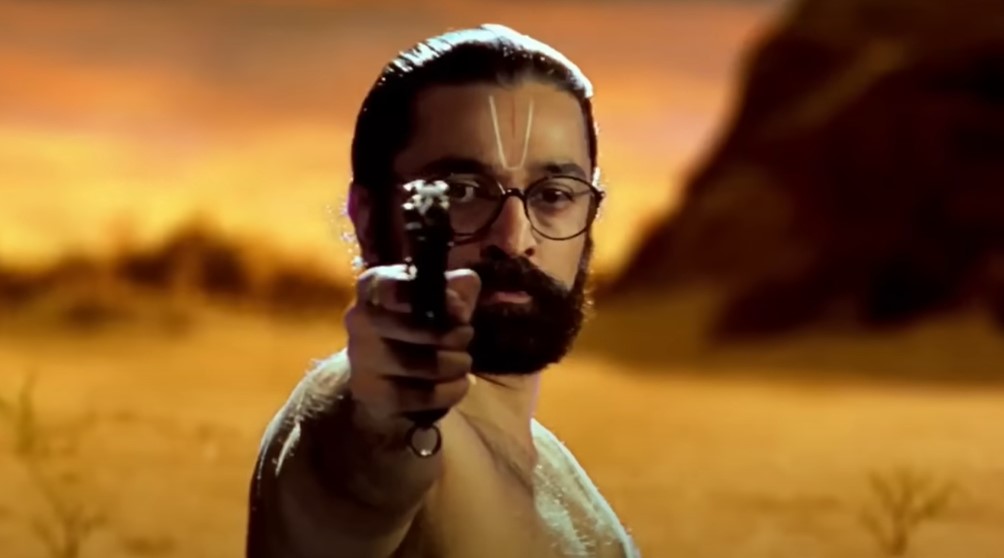Unlike the other films in this series, Kamal Haasan’s Hey Ram isn’t from the 80’s or even the 90s but is one of those films that have stood out as a work of art and, more importantly, a mirror to our lives through the past twenty-three years of its existence.
Films based on partition are always a difficult watch – especially the good ones among them as they expose those ugly truths about us as a race that we conveniently ignore and often swear are a figment of imagination. And Hey Ram does it so convincingly that it can disturb and discomfort you even after all these years.
Written, directed and produced by Kamal Haasan, the movie is basically a memoir of Saket Ram, an archaeologist from Chennai (Madras) who experiences the brutal violence associated with the country’s partition first-hand and the effect it has on him. The film begins with a dying old Saket in the care of his grandson, who narrates the story. The flashback opens at an archaeological site in Mohenjo Daro, now in Pakistan, where a young Saket Ram and his friend Amjad Ali Khan (played by Shahrukh Khan) are exploring an ancient burial site and their work gets abruptly halted due to a looming threat of communal riots across India just before the partition. The next few scenes — arguably the weakest in the film — show Saket, Amjad and their friend Lalwani, a Sindhi colleague (played by Saurabh Shukla) wining and dining with British officers at the office of the Archaeological Survey of India cracking jokes about each other’s families. Soon, the riots begin and Saket lands in Kolkata where his wife Aparna (played by Rani Mukherji) has been eagerly waiting for him. The tense situation in Kolkata is evident when Aparna threatens to shoot Ram when she he hears him knocking her front door.
This part of the film projects Saket Ram as a progressive, educated liberal from an affluent Brahmin family in Madras (now Chennai) married to a Bengali teacher defying deep-rooted religions traditions associated with his upbringing, which he considers to be regressive.

During the riots, a Muslim mob breaks into Saket’s home and attacks them. Aparna is gangraped and murdered while Saket escapes with injuries as Calcutta is engulfed by communal violence. Traumatised by Aparna’s murder, Saket roams the boiling streets with a loaded gun and shoots the men who raped and killed Aparna when he encounters them. While roaming the streets as a madman, he meets Ram Abhyankar (played by Atul Kulkarni), a right-wing Marathi Brahmin journalist, who tries to brainwash Saket against Mahatma Gandhi, whom he blames for the riots and the suffering of Hindus during the partition.
Films based on partition are always a difficult watch – especially the good ones among them as they expose those ugly truths about us as a race that we conveniently ignore and often swear are a figment of imagination.
The next part of the film follows a transformed Saket Ram, who has now embraced his religion and its customs back at his ancestral home in TN and marries a young woman Mythili (played by Vasundhara Das). In this phase of his life, Ram keeps nurturing his hatred for Gandhi as well as Muslims waiting for an opportunity to avenge the alleged injustice to Hindus after Abhyankar comes into Ram’s life once again when revisits Kolkata a year after the riots. The two keep in touch to complete their mission: kill Gandhi.
Upon receiving an invite from Abhyankar, Saket leaves for Maharashtra with his wife and is introduced to a Maratha king who is training an underground army to assassinate Gandhi. Saket is enrolled in the team and also receives training with other men sharing the same objective. Saket and Abhyankar are selected to complete the job but Abhyankar suffers an injury during training and is incapacitated leaving Saket to accomplish the mission. However, the king sends him back home asking him to wait for the right time.
In the final phase of the film, Saket is heading to Delhi upon receiving a telegram from the Maratha king who updates him of Abhyankar’s death and asks him to carry out the mission. Saket abandons his wife and goes to Delhi where plots to kill Gandhi (played by Naseeruddin Shah). During his frequent visits to Gandhi’s place of residence, Saket finds that there are many others roaming around the Mahatma with the same intent. His brief interactions with Gandhi also causes a subtle change of heart in him but he remains committed to the mission.

During a police raid in the hotel where he stays, Saket loses his weapon and is forced to visit a Muslim neighbourhood to retrieve it in the backdrop of continuing riots following Independence. Here he bumps into his old Amjad once again, but his hatred for Muslims gets the better of him. When Amjad leads him to a Muslim hideout during a curfew, clashes break out when the people there find out that Ram was there in search of a gun. The men start attacking him and Ram retaliates resulting in more deaths, which includes Amjad too.
Ram’s interactions with Gandhi during his recce visits and the encounter with his old friend Amjad once again changes him as he begins to believe in non-violence, communal harmony and in Gandhi, whom he now believes as the only solution for the communal riots that the country has been trapped in. As a transformed man, Saket approaches Gandhi to confess his real motive behind trying to get close when another man carries out the assassination.
As the movie ends, the aged Saket is stuck in traffic on December 6, 1999 during riots in Chennai following the anniversary of the Babri Masjid demolition on his way to hospital due to a breathing difficulty. After a long life, Ram dies under a roadside pit as police stop his vehicle from approaching a hospital due to the riots.
Movies like Hey Ram need to be celebrated as they ask the right questions, answers for which we need to introspect and find instead of seeking them out in a three-hour film.
Hey Ram is one of those movies that has its ardent lovers and haters. Despite the in-depth research, beautiful visuals, the subtle symbolism and powerful dialogues, the basic plot of the movie doesn’t work for this reviewer as the protagonist’s view of life changes too drastically, too often. Saket’s reasons for believing Gandhi to be behind the suffering of Hindus are as unconvincing as his transformation as an admirer a few years later.
Putting that aside, the movie is remarkable for the depth of its dialogues, which are for the most part, extremely powerful and meaningful. From choosing Mohenjo Daro (translated as mound of dead) in the opening scene to depict the death and violence that succeeds to visuals of a lizard surrounded by blood to Saket’s love-making with his second-wife which is interspersed with violent visuals are stunning and far ahead of its times. Ilayaraja’s music is soul-drenching as always.
But what is most pertinent about this film at this point in time when the whole nation is chanting the name of Lord Ram is what religious fervour and blatant communalism can lead to in a multicultural society. It has happened in 1947, 1964, 1969, 1984, 1992, 2002 and continues to simmer here and there even now.
Movies like Hey Ram need to be celebrated as they throw a mirror against our face and ask the right questions, answers for which we need to introspect and find instead of seeking them out in a three-hour film.


